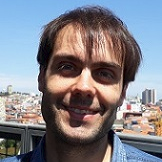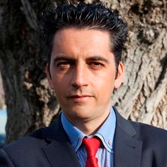Sensors & Methods in Cultural Heritage
A special issue of Remote Sensing (ISSN 2072-4292). This special issue belongs to the section "Engineering Remote Sensing".
Deadline for manuscript submissions: closed (31 December 2021) | Viewed by 32548
Special Issue Editors
Interests: photogrammetry; drones; laser scanning; radiometric calibration; remote sensing; RGB-D sensors; 3D modeling; mobile mapping; metrology; verification; inspection; quality control
Special Issues, Collections and Topics in MDPI journals
Interests: photogrammetry; laser scanning; airborne mapping; 3D modelling; calibration; mobile mapping systems
Special Issues, Collections and Topics in MDPI journals
Interests: photogrammetry; laser scanning; 3D modeling; topography; cartography
Special Issues, Collections and Topics in MDPI journals
Interests: photogrammetry; laser scanning; optical metrology; 3D; AI; quality control
Special Issues, Collections and Topics in MDPI journals
Special Issue Information
Dear Colleagues,
Advance in the knowledge of the tangible components (position, size, shape) and intangible components (identity, habits) of an historic building or site is a fundamental and complex task in any project related to the conservation of cultural heritage (CH). In recent years new Geomatic techniques have proven their usefulness and added value in the field of Cultural Heritage (CH) in the tasks of recording, modelling, conserving and visualizing. In addition, current developments in building information modelling (HBIM), allow to integrate and simulate different sources of information generating a digital twin of any complex CH construction. As a result, experts in the area have increased the number of available sensors and methodologies. However, the quick evolution of geospatial technologies makes necessary to revise their use, integration and application in CH. This process is difficult to adopt due to the new options which are opened for the study, analysis, management and valorization of CH. Therefore, the aim of the present Special Issue is to cover the last and relevant topics, trends and best practices in geospatial technologies and processing methodologies for CH sites and scenarios, and also to introduce the new tendencies.
This special issue originates from the CIPA Symposium “CIPA 2019—Documenting the past for a better future”, which is held in September 2019 in Avila, Spain. One of the main symposium’s scope was to bring together scientists, developers and advanced users who apply sensors and methods in CH. The symposium focused primarily on multi-source and multi-sensor approaches; low-cost sensors and open-source algorithms for 3D modelling; automation in data alignment; image matching and 3D reconstruction; point cloud analysis; 4D modelling; Heritage Building Information Modelling (HBIM); accuracy requirement and assessment in CH; Underwater heritage documentation; Virtual, Augmented and Mixed Reality (VR/AR/MR) applied to the visualization and conservation of CH. The most exciting and innovative papers presented at the symposium will be selected to be extended and included in this cornerstone Special Issue. It is hoped that this special issue provides the advice and guidelines required for any CH professional making the best possible use of this sensors and methods in CH.
We would like to invite you to contribute by submitting articles about your recent research, experimental work, reviews and/or case studies related to the field of 3D recording, modelling, conserving and visualizing of CH. Contributions may be from, but not limited to, the following topics:
- 3D documentation in CH (photogrammetry, laser scanning, UAVs, mobile/handheld recording, 3D modelling, best practices, guidelines)
- Underwater heritage documentation
- Data and sensor fusion in CH (integration, registration, algorithms)
- Point cloud processing in CH (filtering, segmentation, classification, modelling)
- Semantic classification of point clouds in CH.
- Heritage Building Information Modelling (HBIM)
- Accuracy assessment in CH
- Virtual, Augmented and Mixed Reality (VR/AR/MR) in CH
Dr. Pablo Rodríguez-Gonzálvez
Dr. Isabella Toschi
Dr. Diego González-Aguilera
Prof Dr. Fabio Remondino
Guest Editors
Manuscript Submission Information
Manuscripts should be submitted online at www.mdpi.com by registering and logging in to this website. Once you are registered, click here to go to the submission form. Manuscripts can be submitted until the deadline. All submissions that pass pre-check are peer-reviewed. Accepted papers will be published continuously in the journal (as soon as accepted) and will be listed together on the special issue website. Research articles, review articles as well as short communications are invited. For planned papers, a title and short abstract (about 100 words) can be sent to the Editorial Office for announcement on this website.
Submitted manuscripts should not have been published previously, nor be under consideration for publication elsewhere (except conference proceedings papers). All manuscripts are thoroughly refereed through a single-blind peer-review process. A guide for authors and other relevant information for submission of manuscripts is available on the Instructions for Authors page. Remote Sensing is an international peer-reviewed open access semimonthly journal published by MDPI.
Please visit the Instructions for Authors page before submitting a manuscript. The Article Processing Charge (APC) for publication in this open access journal is 2700 CHF (Swiss Francs). Submitted papers should be well formatted and use good English. Authors may use MDPI's English editing service prior to publication or during author revisions.
Keywords
- Cultural Heritage
- Photogrammetry
- Range-based sensors
- Mobile sensors
- 3D modelling
- Sensor fusion and data integration
- Point cloud processing (filtering, segmentation, classification, modelling)
- HBIM
- VR/AR/MR








